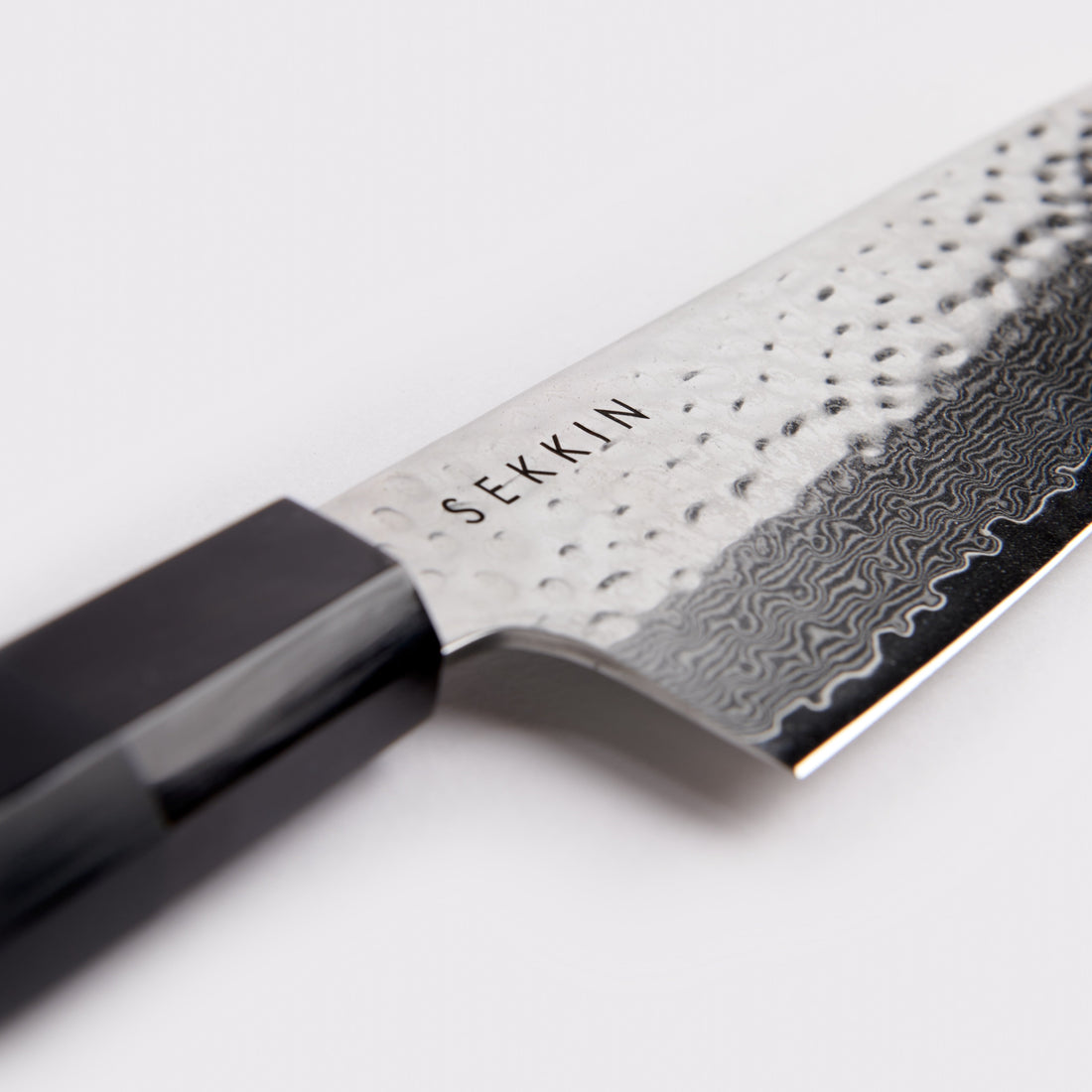
Damascus Steel in Japanese Knives: What It Is and Why It Matters
Share
Damascus steel is more than just a buzzword in the world of premium cutlery—it's a symbol of craftsmanship, performance, and enduring beauty. But what exactly is Damascus steel? And why is it so often featured in high-end Japanese knives?
What Is Damascus Steel?
Damascus steel originally referred to blades made in the Near East from a type of crucible steel known as wootz, which was first produced in India as early as 300 BC. These blades gained their name from the city of Damascus in present-day Syria, a major hub for swordsmithing and trade during the Middle Ages. Warriors and traders prized these knives for their superior edge retention, strength, and the mesmerizing ripple patterns that danced across the blade—patterns said to resemble flowing water.
Though the original process was lost by the 18th century, modern blacksmiths have developed advanced techniques to recreate the signature look. Today, “Damascus steel” usually refers to pattern-welded or layered steel that mimics the aesthetic and resilience of historical blades.
Why Is Damascus Steel Used in Japanese Knives?
Japanese knives are known for precision and refinement—and Damascus steel complements both. Here's why this legendary material is used so widely in Japanese knife-making today:
- Aesthetic Appeal: The swirling, layered patterns of Damascus steel are instantly recognizable. These ripples add a level of artistry and uniqueness to each blade, turning every knife into a visual statement. In Japanese culture, where the presentation is often as important as the process, this beauty carries significant value.
- Functional Strength: Modern Damascus steel Japanese knives often have a hard carbon steel core (such as VG-10 or AUS-10) wrapped in multiple layers of softer steel. This construction results in blades that are both razor-sharp and resistant to corrosion—ideal for both professional chefs and dedicated home cooks.
- Fusion of Tradition and Innovation: Damascus steel honors centuries of metallurgical artistry while embracing modern performance. Japanese knifemakers use this material to blend history and innovation, continuing a tradition of excellence in the culinary world.
- Tactile Performance: Beyond aesthetics, the layered structure of Damascus steel can provide subtle texture, offering improved grip and feedback during slicing. This tactile quality enhances control, especially during precision cuts.
What Is Damascus Steel in Japanese Knives?
Damascus steel in Japanese knives refers to layered and forged steel that showcases rippling wave-like patterns. These layers are not only visually appealing but serve functional benefits—offering strength, flexibility, and resistance to wear.
The SEKKIN Take
At SEKKIN, we chose Damascus steel not only for its timeless beauty but for what it represents: a fusion of history, precision, and performance. Each ripple in the blade tells a story—one of craftsmanship, tradition, and the art of cooking itself.
Whether you're slicing sashimi or mincing herbs, a Damascus steel knife doesn’t just get the job done—it makes every cut a pleasure.
